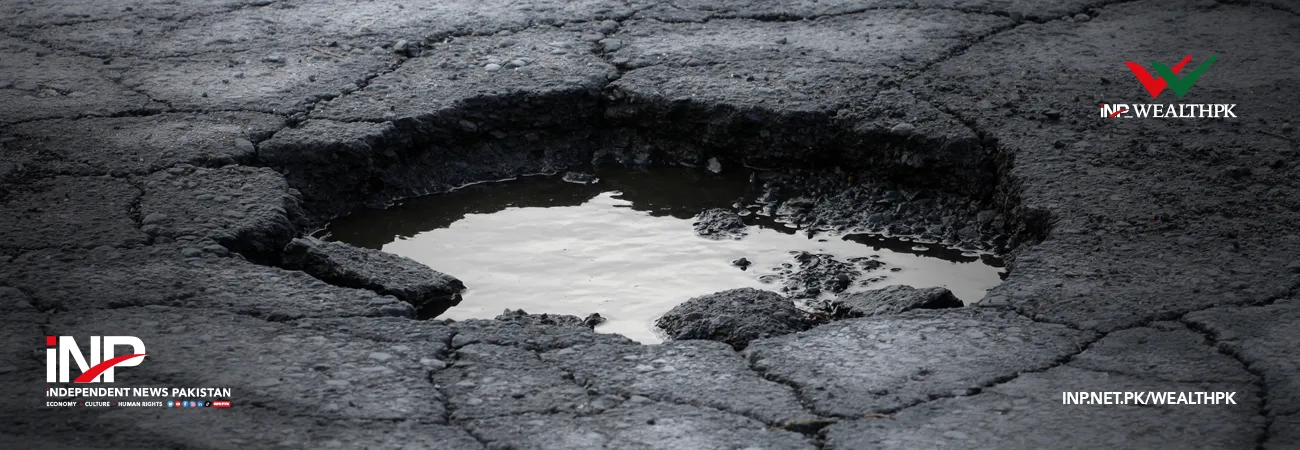INP-WealthPk
By Ayesha Saba
ISLAMABAD, March 30 (INP-WealthPK): Pakistan largely depends on groundwater to meet its irrigation needs in the agriculture sector and satisfy the expanding industrial and household consumption, which has, worryingly, resulted in rapid depletion of subsurface water resources.
 Groundwater pumping is so widespread that it has almost drained Pakistan out of this precious source, with some places reporting a two-to-three-meter drop each year.
Bilal Iqbal, a senior scientific officer with Water Resources Institute at the National Agriculture Research Council, told WealthPK, “Industrial and agriculture sectors and domestic supplies heavily rely on groundwater because our freshwater resources can’t meet the growing demand.”
“Most rural households have easy access to water through handpumps, motorised pumps, and manually from wells. Uncontrolled pumping of groundwater through the private tube wells due to a shortage of canal water is a big reason behind groundwater depletion.”
Bilal Iqbal said, “Because there is nobody governing groundwater use, anyone can install any number of tube wells, of any size, at any depth, and pump any amount of water at any time. As tube wells are installed indiscriminately and pumping is unregulated, groundwater is being depleted in many canal commands and almost all urban centres.”
“Due to excessive pumping, Pakistan’s groundwater abstraction rates have exceeded the annual recharge rate of 55 cubic kilometres per year. Consequently, groundwater tables are lowering rapidly in different parts of the country”.
The NARC scientist continued, “Groundwater management cannot succeed in Pakistan until institutional accountability is in place. Because the provinces have responsibilities for resource management, accountability should be centered on lead agencies at the provincial level.”
“As the country has yet to develop an evidence-based, sustainable groundwater management programme, sustainability of groundwater resources faces a number of challenges,” Bilal Iqbal pointed out. He said that unconfined aquifers are subject to massive overexploitation and contamination, mainly because of climate change and a growing population, falling water tables, virtual water trade, no water metering, and pricing, evapotranspiration, increasing water demand, less recharging of aquifers, unchecked drilling, and gaps in governance.
Groundwater pumping is so widespread that it has almost drained Pakistan out of this precious source, with some places reporting a two-to-three-meter drop each year.
Bilal Iqbal, a senior scientific officer with Water Resources Institute at the National Agriculture Research Council, told WealthPK, “Industrial and agriculture sectors and domestic supplies heavily rely on groundwater because our freshwater resources can’t meet the growing demand.”
“Most rural households have easy access to water through handpumps, motorised pumps, and manually from wells. Uncontrolled pumping of groundwater through the private tube wells due to a shortage of canal water is a big reason behind groundwater depletion.”
Bilal Iqbal said, “Because there is nobody governing groundwater use, anyone can install any number of tube wells, of any size, at any depth, and pump any amount of water at any time. As tube wells are installed indiscriminately and pumping is unregulated, groundwater is being depleted in many canal commands and almost all urban centres.”
“Due to excessive pumping, Pakistan’s groundwater abstraction rates have exceeded the annual recharge rate of 55 cubic kilometres per year. Consequently, groundwater tables are lowering rapidly in different parts of the country”.
The NARC scientist continued, “Groundwater management cannot succeed in Pakistan until institutional accountability is in place. Because the provinces have responsibilities for resource management, accountability should be centered on lead agencies at the provincial level.”
“As the country has yet to develop an evidence-based, sustainable groundwater management programme, sustainability of groundwater resources faces a number of challenges,” Bilal Iqbal pointed out. He said that unconfined aquifers are subject to massive overexploitation and contamination, mainly because of climate change and a growing population, falling water tables, virtual water trade, no water metering, and pricing, evapotranspiration, increasing water demand, less recharging of aquifers, unchecked drilling, and gaps in governance.
| Sr. # | Description | Groundwater(mgd) | % Age share | Surface Water (mgd) | % Age Share | Total Water Use (mgd) |
| 1 | WASA Lahore | 540 | 100 % | 0 | 0% | 540 |
| 2 | WASA Faisalabad | 89 | 19 % | 21 | 81% | 110 |
| 3 | WASA Rawalpindi | 35 | 68 % | 16 | 31 % | 51 |
| 4 | WASA Multan | 40.5 | 100 % | 0 | 0% | 40.5 |
| 5 | WASA Gujranwala | 32 | 100 % | 0 | 0% | 32 |
| Total | 736.5 | 37 | 773.5 |













